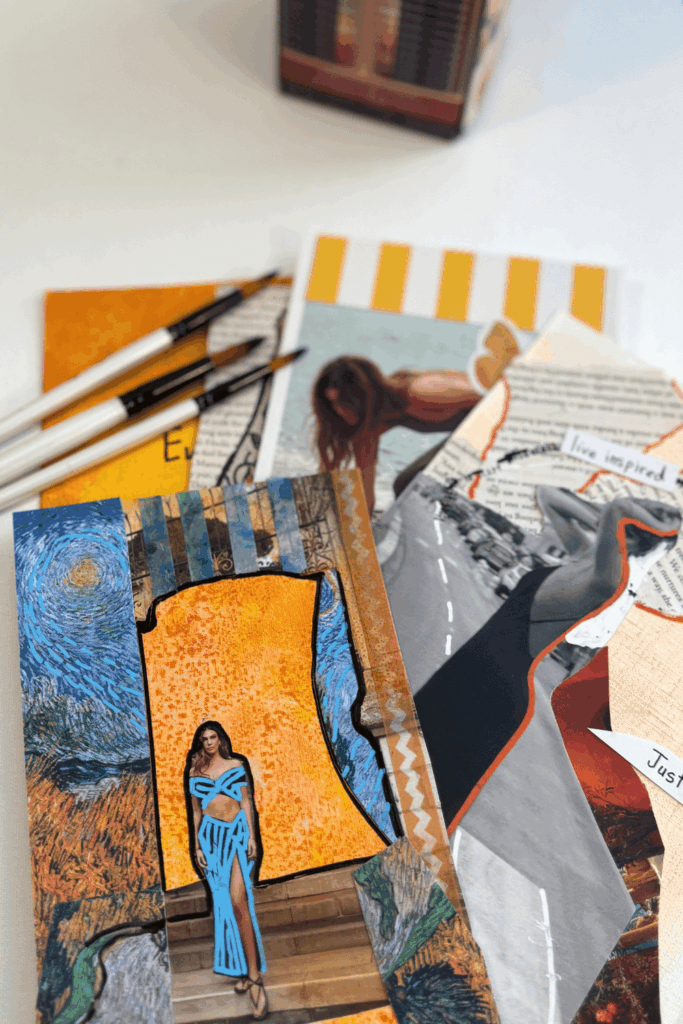
For me, art journaling is the quiet conversation between my inner world and my hands. It is where words fall short, but colors and paint brush marks can speak volumes. It is a sanctuary where there are no rules, only the sacred freedom to explore.
Think of it as a playground for the soul, a private universe where there is no such thing as a mistake, only a beautiful discovery waiting to be made. This journal is not for anyone but you. It is your secret garden, a place to dig in the earth of your own imagination without the weight of perfection. Here, you are free to simply be. You’re free to experiment, to unravel, and to bloom.
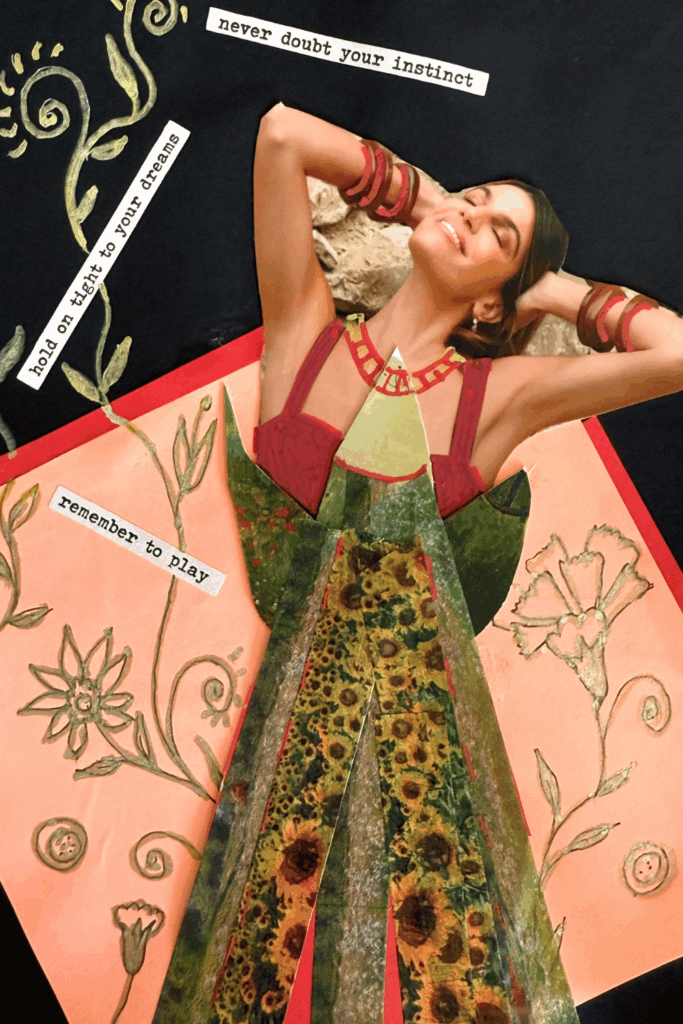
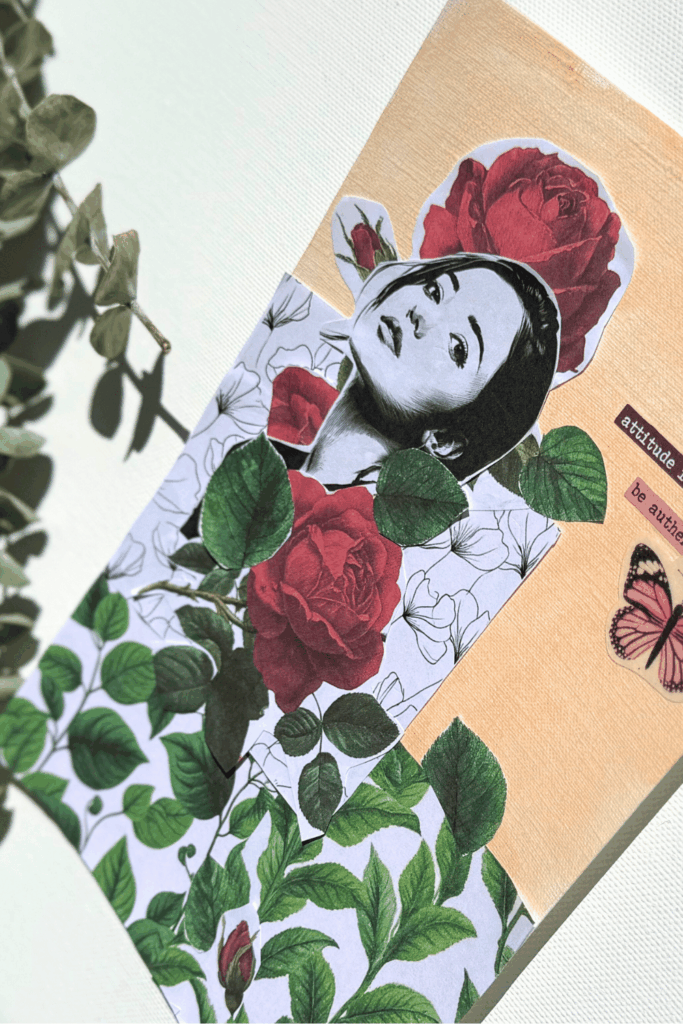
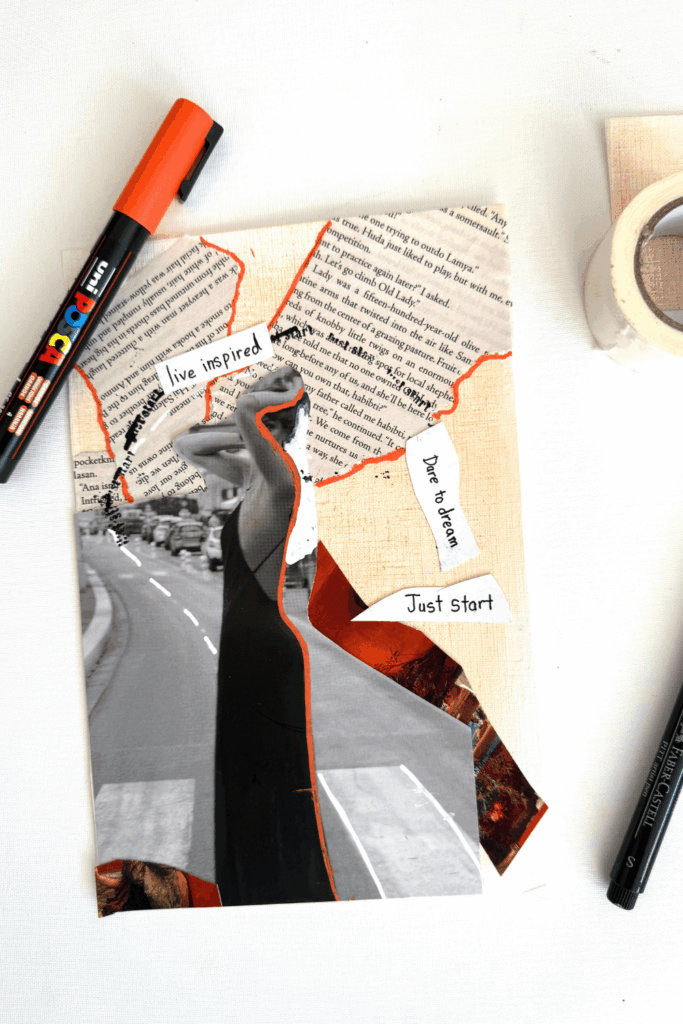
Table of Contents
- What Is Art Journaling?
- Why Art Journaling Changed Everything For Me.
- Why Start Art Journaling?
- Art Journaling Supplies for Beginners
- How to Create Your First Art Journal Page
- 5 Easy Art Journaling Techniques for Beginners
- Overcoming Common Art Journaling Fears
- Building a Sustainable Art Journaling Practice
- What to Do After Your First Pages
- Common Art Journaling Mistakes and How to Fix Them
- Frequently Asked Questions
- Start Your Art Journal Journey Today
- Get Free Downloads
What Is Art Journaling? (Definition for Beginners)
For me, art journaling is the quiet conversation between my inner world and my hands.
It is where words fall short, but colors and paint brush marks can speak volumes. It is a
sanctuary where there are no rules, only the sacred freedom to explore.
Think of it as a playground for the soul, a private universe where there is no such thing
as a mistake, only a beautiful discovery waiting to be made. This journal is not for
anyone but you. It is your secret garden, a place to dig in the earth of your own
imagination without the weight of perfection. Here, you are free to simply be. You’re
free to experiment, to unravel, and to bloom.
What is an art journal, really? Imagine a quiet garden for your thoughts. A secret keeper
for your dreams.
Your art journal is that place. It’s a simple notebook where you can blend:
A soft watercolor wash that feels like a sunset
A line from your favorite love song
A pressed flower from a morning walk
A doodle that makes your heart smile
There are no mistakes here. Only beauty in the imperfect.
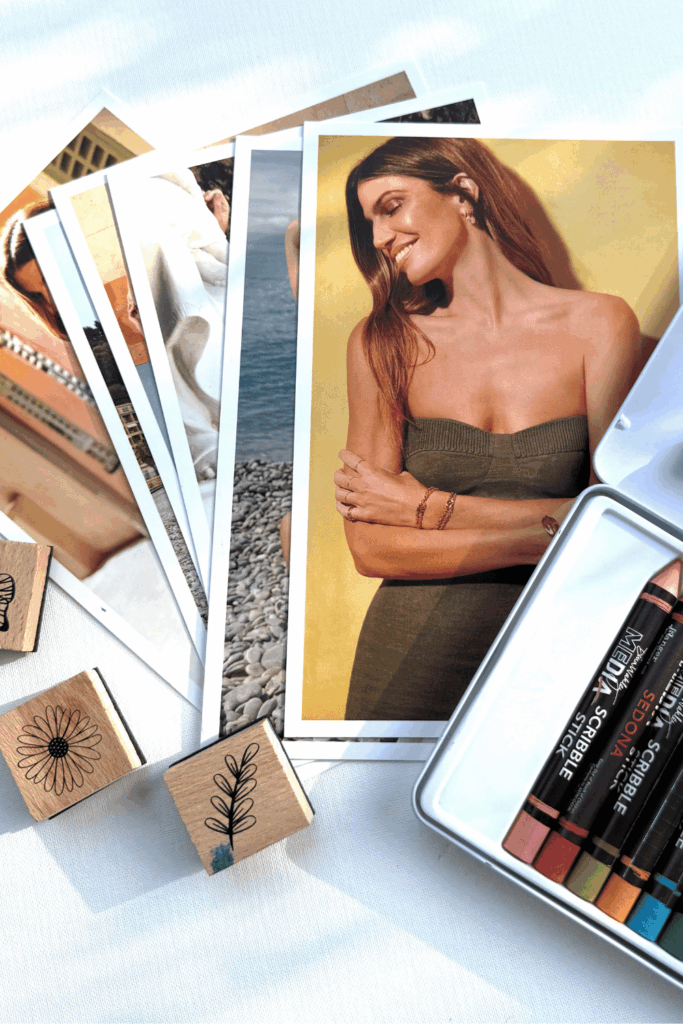
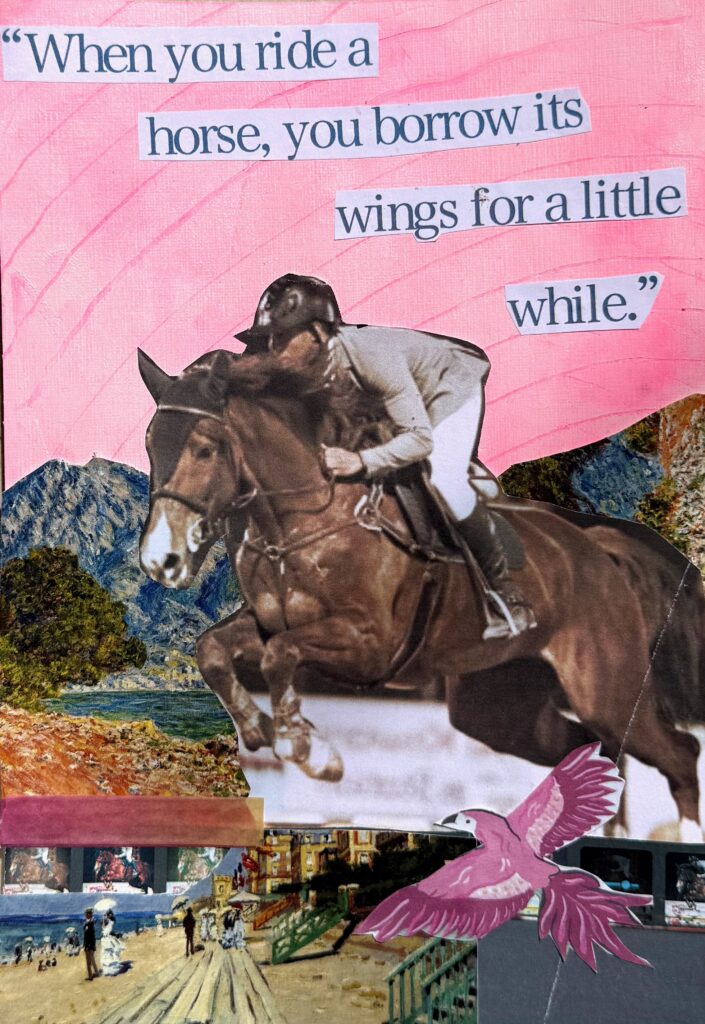
Why Art Journaling Changed Everything for Me (And Why I Wish I'd Started Sooner)
I have to be honest with you: during my entire program in Fine Arts, I was never introduced to art journaling. We focused on technique, theory, portfolio pieces, and creating work that was “gallery-worthy.” Everything felt precious and high-stakes.
When I finally discovered art journaling years later, I realized what I’d been missing all along.
Art journaling gave me something my formal education never did: creative freedom without fear. There was no blank page anxiety because I knew nothing had to be perfect. I wasn’t afraid to try new techniques or experiment with unfamiliar materials because nothing was too precious. If something didn’t work? I could paint over it, collage on top of it, or simply turn the page.
This practice transformed how I approached creativity. It encouraged experimentation,
built my confidence, and reminded me that the process matters more than the outcome. I became braver, more playful, and more connected to my authentic creative voice.
That’s why I’m so passionate about teaching art journaling to beginners. I don’t want
you to wait years to discover this practice like I did. Whether you’re a complete beginner or someone with formal training, art journaling offers something truly special:
permission to create freely, make mistakes joyfully, and grow without judgment.
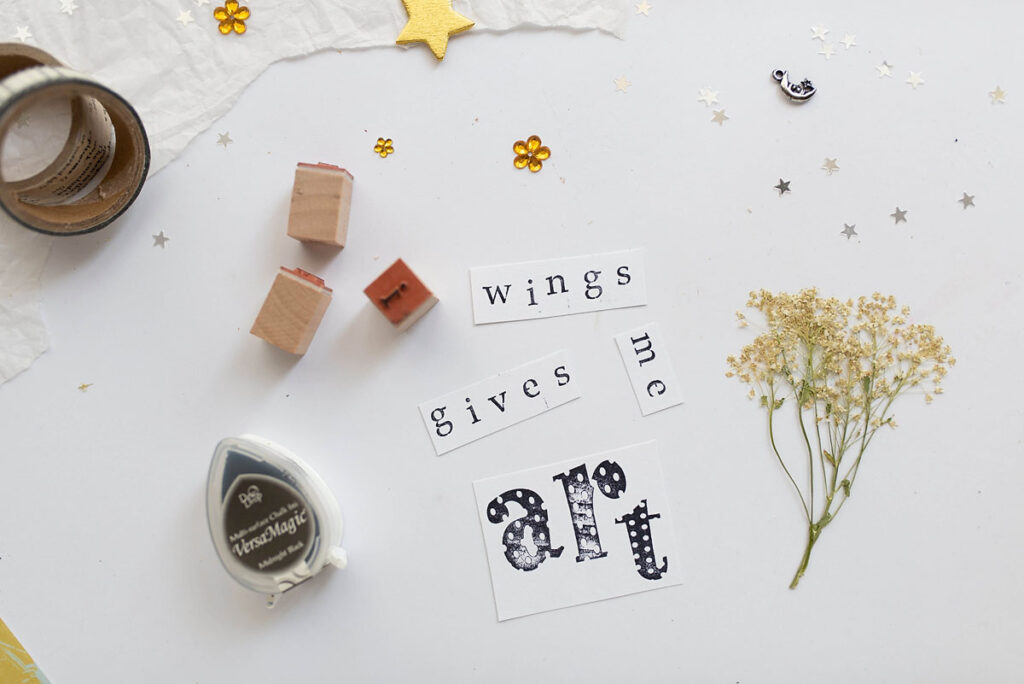
Why Start Art Journaling? (Benefits and Reasons)
Do you remember the joy of putting color to paper as a child? The sheer delight of a crayon in your hand, with no goal but to play?
That feeling is waiting for you again.
Art journaling is like writing a love letter to your own life. It’s not about being a “real artist.” It’s a gentle, forgiving space where your heart can speak in colors, textures, and whispers. It’s where you can meet yourself, just as you are.
Benefits of art journaling for beginners include:
Reducing stress and anxiety through creative expression.
Building confidence in your artistic abilities.
Processing emotions in a healthy, visual way.
Developing a sustainable creative practice.
Creating a personal record of your journey and growth.
Discovering your unique artistic voice.
Art Journaling Supplies for Beginners (Essential List)
As an Amazon Associate, I earn from qualifying purchases. This means that if you click on certain links on this site and make a purchase, I may receive a small commission — at no extra cost to you. I only recommend products I truly love or use myself, and your support helps me keep creating free art content and tutorials. Thank you!
1. A Journal or Sketchbook – Choose one with mixed media or watercolor paper (at least 140 lb/300 gsm) if you plan to use wet media. A simple hardbound sketchbook works perfectly for beginners starting art journaling.
- 2. Pens or Markers – Black fine-tip pens for drawing and writing, plus a few colored markers for adding pops of color.
- 3. Watercolors or Acrylics – Pick one to start with. Watercolors are more forgiving for beginners, while acrylics offer bold, opaque coverage.
- 4. Glue Stick – For adding collage elements like magazine cutouts, printed images, or ephemera.
- 5. Tools to Apply Paint – Brushes, palette knives, plastic cards, rubber brayers, color shaping tools, rubber stamps, hand-carved stamps, and stencils.
Additional materials to consider:
Magazines, photos, books, or loose paper as base for journaling Paper and other collage elements White gel pen for highlights Washi tape for decorative borders
That’s it! You can always add more art journaling supplies later, but these basics will carry you through hundreds of pages.
Want a complete supply checklist? Download our free Art Journal Starter Kit with printable shopping lists and beginner recommendations.
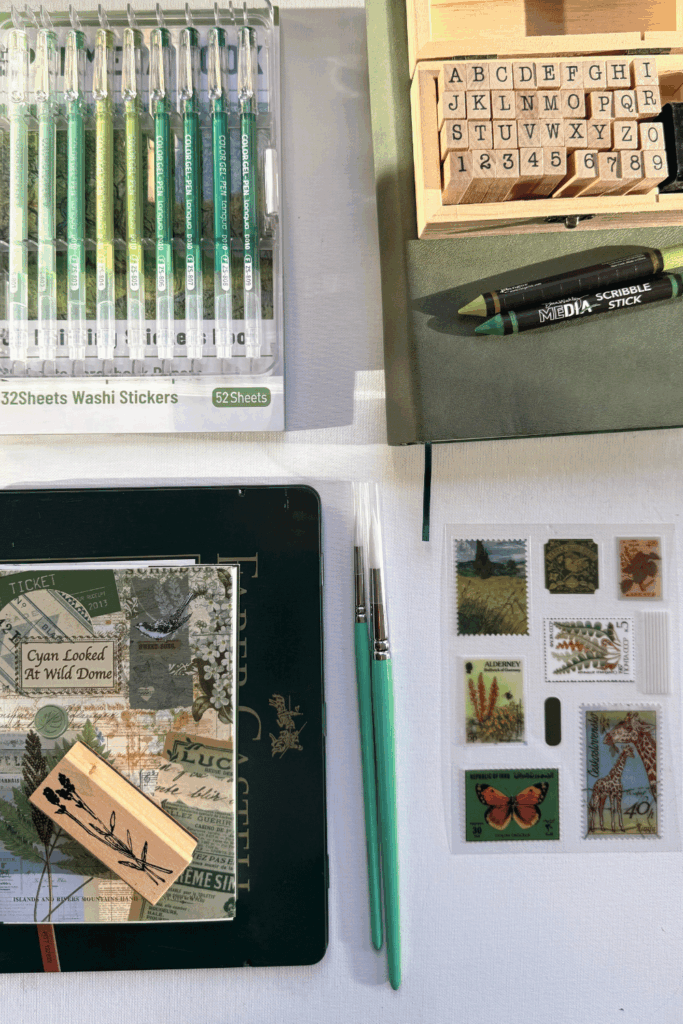
How to Create Your First Art Journal Page (Step-by-Step
Ready to dive in? Here’s a simple process that removes the intimidation and gets you creating right away. This step-by-step art journaling tutorial is perfect for absolute beginners.
Step 1: Choose a Theme or Prompt
Starting with a blank page can feel overwhelming. Give yourself direction by choosing a simple theme:
How you’re feeling today
Your favorite season
A recent memory
A word that inspires you
Colors that make you happy
An artwork that you love
A quote that speaks to you
Don’t overthink it.
The theme is just a starting point, not a rule. These beginner art journal prompts are meant to spark creativity, not limit it.
Step 2: Create a Background Layer
Starting with a background layer removes the fear of the blank page and gives you a foundation to build on.
Easy background techniques for beginners:
Watercolor wash: Wet your page and drop in watercolor, letting colors blend naturally.
Acrylic layer: Use a wide brush to sweep acrylic paint across the page.
Collage base: Glue down torn magazine pages or tissue paper.
Marker blending: Color with markers and blend with a damp brush
Let your background dry completely before moving to the next step.
Step 3: Add Your Main Element
This is where your theme comes to life. Your main element could be:
A simple drawing (flowers, faces, shapes, patterns)
A collaged image from a magazine
A stamped or stenciled design
Hand-lettered words or quotes
Abstract shapes and marks
Remember: It doesn’t have to be perfect or realistic. Art journaling celebrates imperfection and personal style. This is one of the most important art journaling tips for beginners. (let go of perfection).
Step 4: Layer and Embellish
Now add depth and interest by layering additional elements:
Doodles and patterns around the edges
Words or phrases that relate to your theme
Additional collage pieces
Splashes of paint or ink
Highlights with white gel pen or paint
There’s no right amount of layering just keep going until your page feels complete to you.
Step 5: Reflect and Date Your Page
Before you close your journal, pause for one minute.
Add the date to a corner of your page. This isn’t just a note; it’s a soft reminder of this moment in time. You might also want to write a single line of a feeling, a hope, a word that captures the essence of what your heart was saying.
Then, look at your page not with a critical eye, but with a kind one.
See the colors, the textures, the marks. They are all a part of you, captured on paper. There is no right or wrong here; there is only the beautiful, honest truth of your experience.
Take a deep breath, and smile. You did it. You turned a blank page into a keepsake for your soul.
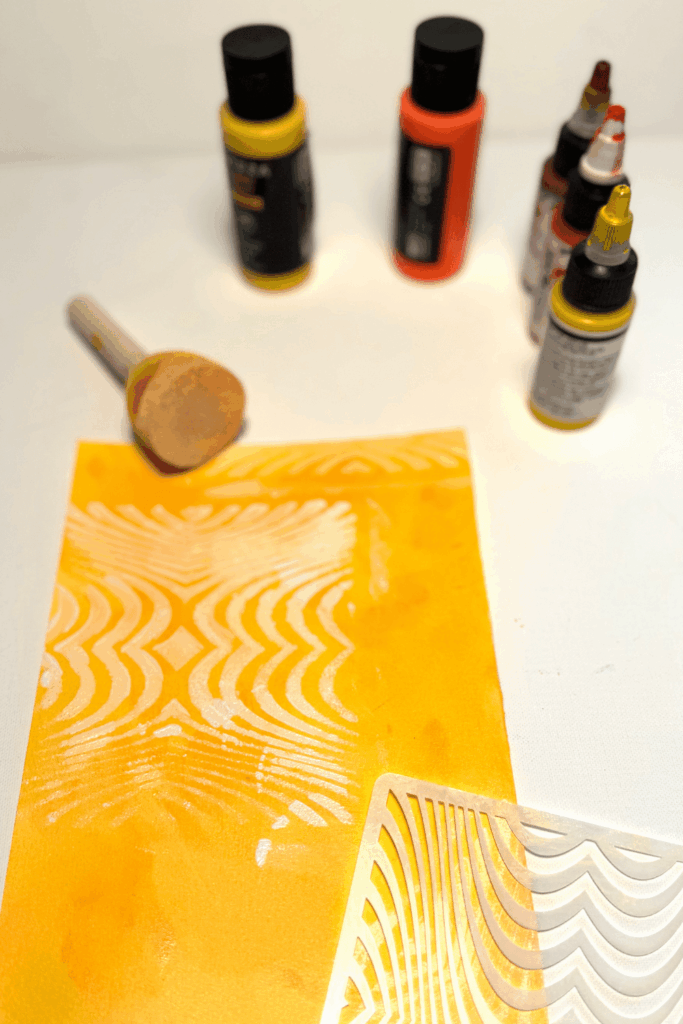
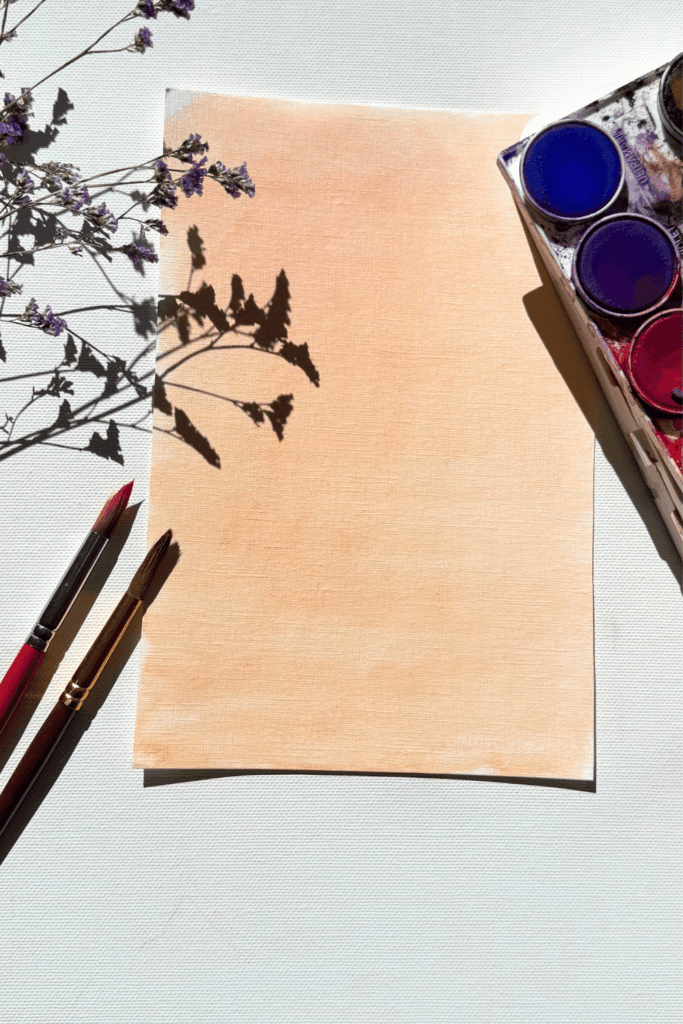
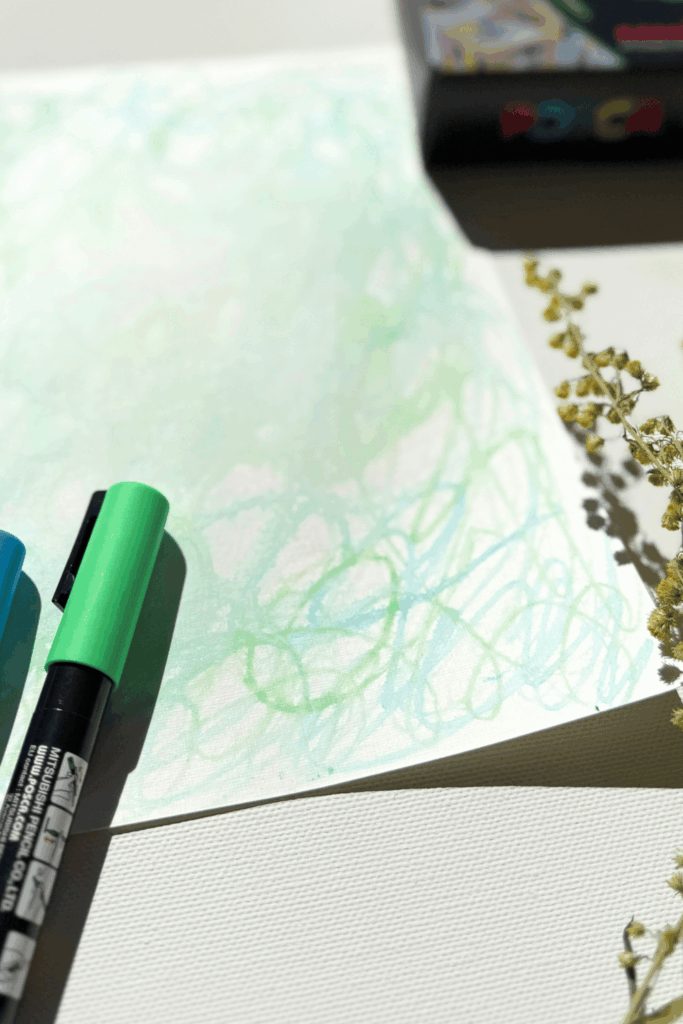
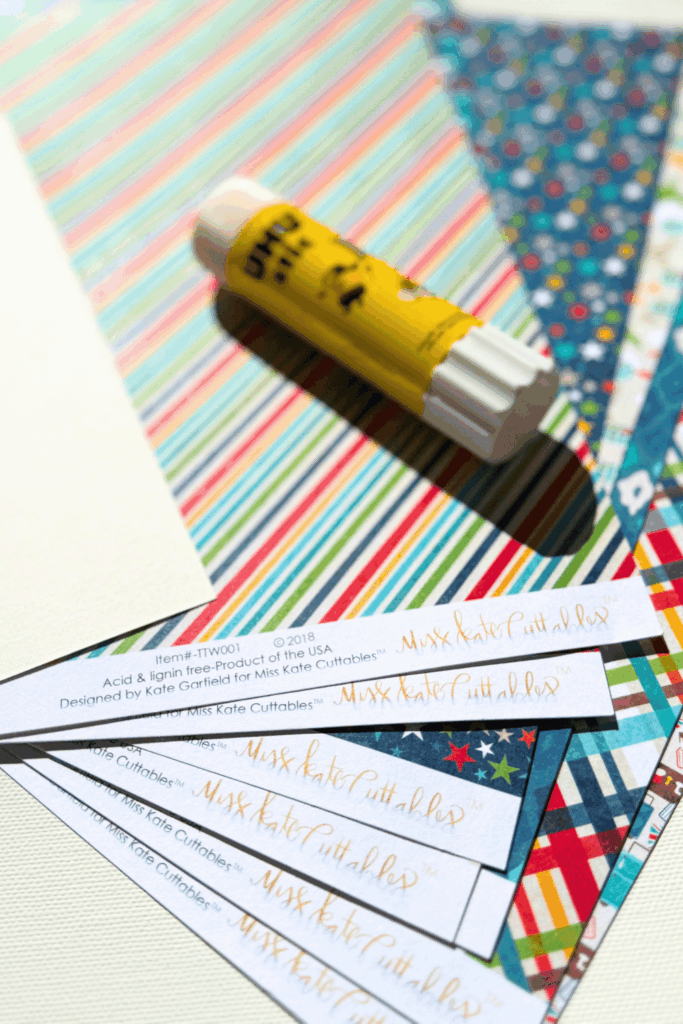
5 Easy Art Journaling Techniques for Beginners
Once you’re comfortable with the basic process, experiment with these simple art journaling techniques. Each one is beginner-friendly and requires minimal supplies.
1. Watercolor Resist Technique
Draw or write with white crayon or oil pastel, then paint over with watercolor. The wax resists the paint, creating a magical reveal effect. This is one of the most popular easy art journal ideas for beginners.
2. Magazine Collage Portraits
Cut facial features from magazines and rearrange them to create quirky, abstract faces. No drawing skills required! This technique is perfect if you think “I can’t draw.”
3. Playing with Acrylic
Apply acrylic paint to a plastic sheet or plate, press your journal page onto it, and lift to create unique textured prints. Each print is one-of-a-kind.
4. Doodle Frames
Create a simple border of repetitive patterns (dots, lines, scallops) around your page. It’s meditative and adds polish to any page.
5. Color Blocking
Divide your page into geometric sections and fill each with a different color or pattern. Modern, bold, and beginner-friendly.
Overcoming Common Art Journaling Fears
Every beginner faces similar fears when starting art journaling. Here’s how to overcome them:
“I Can’t Draw” Solutions for Non-Artists
Good news: you don’t need to draw realistically in art journaling! Use simple shapes, stick figures, abstract marks, or collage instead. Many successful art journalers rarely draw at all.
Art journaling for beginners is about expression, not technical skill. Focus on colors, textures, and composition rather than realistic representation.
“I’ll Ruin the Page” Embracing Mistakes
Here’s a secret: there are no ruined pages, only opportunities to layer and transform. If you don’t like something, paint over it, collage on top, or embrace it as part of your creative journey.
This is what makes art journaling so freeing, nothing is too precious. Every “mistake” is just another layer in your creative story.
“I Don’t Know What to Create” Using Prompts
Use prompts! Keep a list of themes, emotions, or words nearby. You can also flip through your journal and respond to a previous page, creating a visual conversation with yourself.
Our free Art Journal Starter Kit includes 30 days of beginner-friendly prompts to keep your creativity flowing.
“My Pages Don’t Look Like Others Online” Finding Your Style
That’s actually perfect. Your art journal should look like YOU, not like someone else. Comparison kills creativity so focus on your own expression and growth.
The most authentic art journaling comes from embracing your unique perspective and style, not copying others.
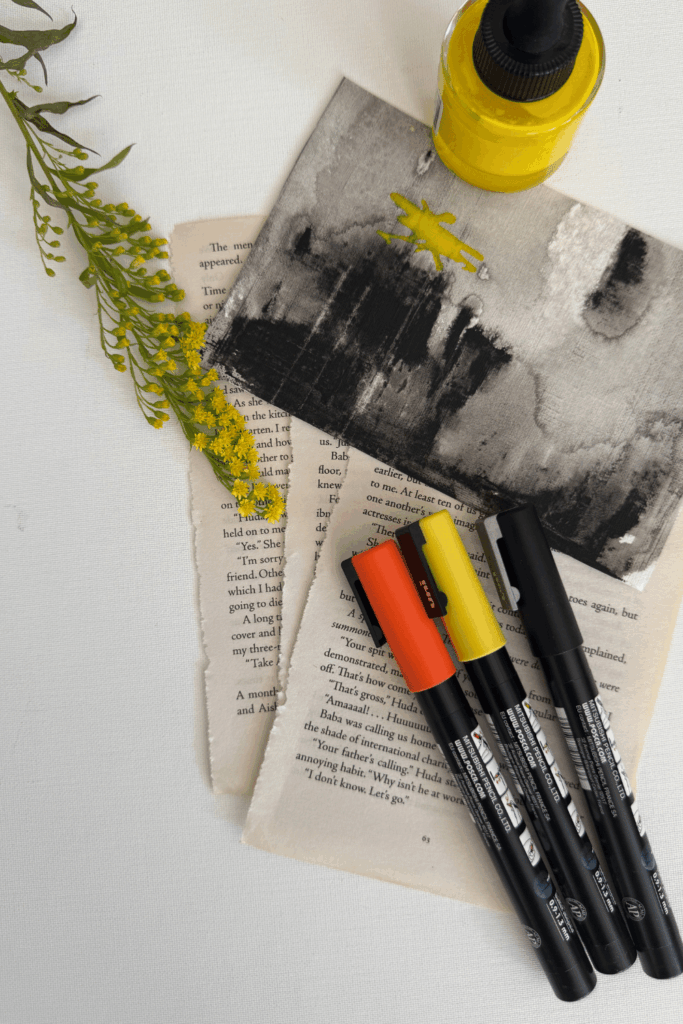
Building a Sustainable Art Journaling Practice
Start Small
You don’t need to create masterpieces or fill entire pages. Start with 10-15 minutes a few times a week. Small, consistent practice builds confidence faster than marathon sessions.
This is one of the most important tips for how to start art journaling successfully, consistency matters more than perfection.
Create a Simple Routine
Keep your art journaling supplies in one accessible spot. Having everything ready to go removes barriers and makes it easier to show up regularly.
Consider creating a dedicated art journaling space, even if it’s just a small corner with a basket of supplies.
Let Go of Perfection
Your art journal is a practice space, not a portfolio. Give yourself permission to experiment, make “mistakes,” and create ugly pages. They’re all part of the learning process.
Remember: the goal isn’t to create gallery-worthy work. The goal is to show up, play, experiment, and grow.
Document Your Journey
Take photos of your pages as you go. Looking back at where you started helps you see how far you’ve come and builds confidence in your progress.
Many beginners are amazed at their growth after just a few months of regular art journaling practice.
What to Do After Your First Few Art Journal Pages
Once you’ve created 5-10 pages and feel comfortable with the basics, you can:
Explore new techniques: Try stamping, stenciling, or image transfers
Develop themes: Create a series of pages around a single concept
Add depth: Learn basic color theory or composition principles
Join a community: Share your work and get inspired by other art journalers
Take a structured course: Deepen your skills with guided instruction.
Common Art Journaling Mistakes to Avoid (And How to Fix Them)
After making plenty of mistakes myself during my own art journaling journey, I’ve identified the most common pitfalls that hold new art journalers back. Let’s explore these mistakes and, more importantly, how to avoid them so you can build a joyful, sustainable practice from day one.
Mistake #1: Buying Too Many Supplies Before You Start
The Problem: Many beginners think they need every art supply imaginable before creating their first page. They spend hundreds of dollars on specialty papers, dozens of paint colors, expensive brushes, and countless embellishments, only to feel overwhelmed and paralyzed by choice.
The Solution: Start with just five basic supplies:
One journal or sketchbook (mixed media paper, 140 lb/300 gsm) A set of basic watercolors or acrylics Black fine-tip pen and a few colored markers Glue stick for collage One or two brushes.
Mistake #2: Waiting for the “Perfect” Journal
The Problem: Beginners spend weeks researching the “perfect” art journal, reading countless reviews, comparing paper weights, and agonizing over size and binding. Meanwhile, they’re not creating anything.
Why This Happens: Fear of commitment. If you choose the “perfect” journal, you’ll have no excuse not to start. It’s a form of creative procrastination disguised as preparation. The Solution: Choose a journal that meets these basic criteria and start today:
Mixed media or watercolor paper (at least 140 lb/300 gsm) Size that feels comfortable (most beginners love 8×10″ or 9×12″) Hardbound or spiral—whatever you prefer Within your budget
Your first journal is a practice journal, not a masterpiece portfolio. You’ll learn what you like and dislike through actually using it, not through research.
Mistake #3: Treating Every Page Like a Finished Masterpiece
The Problem: New art journalers approach each page with the pressure of creating something “Instagram-worthy.” They spend hours on a single page, agonize over every mark, and feel devastated if it doesn’t turn out perfectly.
The Solution: Embrace the concept of “practice pages.” Your art journal is:
A playground for experimentation, not a gallery A place to try techniques without judgment. A record of your creative journey, including the messy parts For YOU, not for social media validation
Frequently Asked Questions About Art Journaling for BeginnersAdd Your Heading Text Here
What is art journaling?
Art journaling is a creative practice that combines visual art (painting, drawing, collage) with personal reflection in a journal format. It’s accessible to everyone, regardless of artistic skill level, and emphasizes creative expression over technical perfection.
What supplies do I need to start art journaling?
You only need 5 basic art journaling supplies: a journal or sketchbook with mixed media paper, pens or markers, watercolors or acrylics, a glue stick, and painting tools like brushes. That’s enough to create hundreds of pages.
Can I start art journaling if I can’t draw?
Absolutely! Art journaling for beginners doesn’t require drawing skills. You can use collage, stamps, stencils, abstract marks, and simple shapes instead. Many successful art journalers rarely draw realistic images.
What are the best art journals for beginners?
Look for journals with mixed media or watercolor paper (at least 140 lb/300 gsm) that can handle wet media. Hardbound sketchbooks work well for beginners. Popular brands include Strathmore, Canson, and Arteza.
How often should I art journal?
There’s no “should” art journal as often as feels right for you. Many beginners find success with 2-3 short sessions per week. Consistency matters more than frequency when building a sustainable practice.
Can art journaling help with stress and anxiety?
Yes! Many people find that art journaling reduces stress and anxiety by providing a creative outlet for processing emotions. The meditative nature of layering colors and textures can be deeply calming.
Do I need to show my art journal to anyone?
No! Your art journal is completely private unless you choose to share it. Many art journalers keep their journals entirely to themselves, while others enjoy sharing pages with supportive communities. You can join our friendly Facebook Group or #artfulhaven for instagram
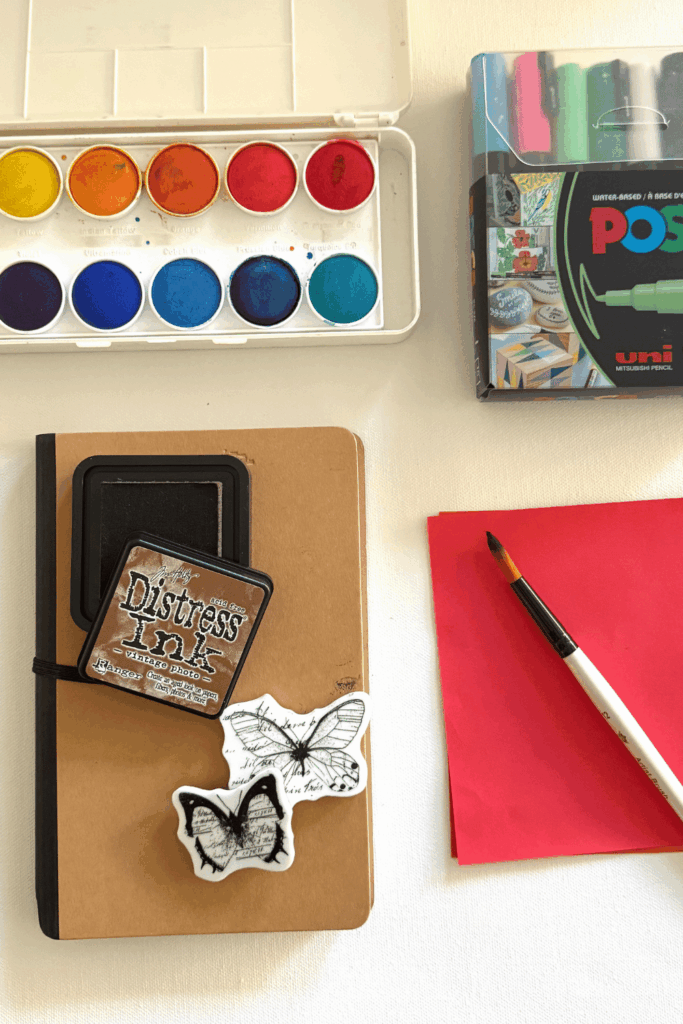
Start Your Art Journaling Journey Today
There is a special kind of magic waiting for you in the pages of an art journal. It is one of the most gentle and forgiving creative practices, a sanctuary where you can simply be. It asks for no special skills, only an open heart.
If you are new, welcome. Your first mark is a beautiful beginning. If you have an old journal tucked away on a shelf, welcome back. Its pages have been waiting for you without judgment.
Remember, every seasoned art journaler once stood where you are now, feeling the quiet mix of excitement and uncertainty. They began, and so can you. I came to art journaling after years of formal art training, and it was here I rediscovered the pure joy of creating just for me. You don’t need a degree or expensive supplies. You only need your curiosity and the courage to make that first, loving mark.
Let this be your gentle nudge to begin again, or for the very first time. Pick up your journal, find a prompt that whispers to you, and let your heart guide your hand. Create a page that feels true to you that is perfect in its beautiful imperfection.
free Downloads
I’ve created some printable images to spark your imagination. Feel free to use them in your art journal.
Get Your Free Printable Images
To help you begin your art journaling journey with confidence, we’ve created a comprehensive free Art Journal Starter Kit filled with everything you need:
30 days of gentle prompts for beginners
Happy Journaling
Salwa